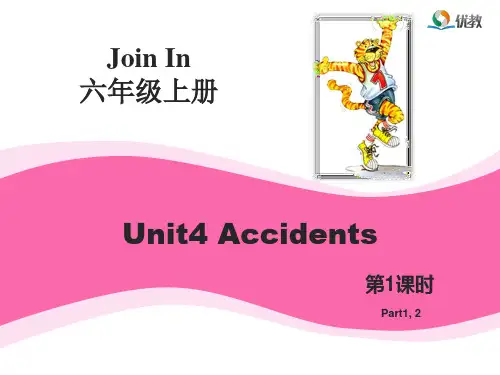Unit 4 School 剑桥小学英语六年级上册Join in新版第四单元课件
- 格式:pptx
- 大小:14.51 MB
- 文档页数:30
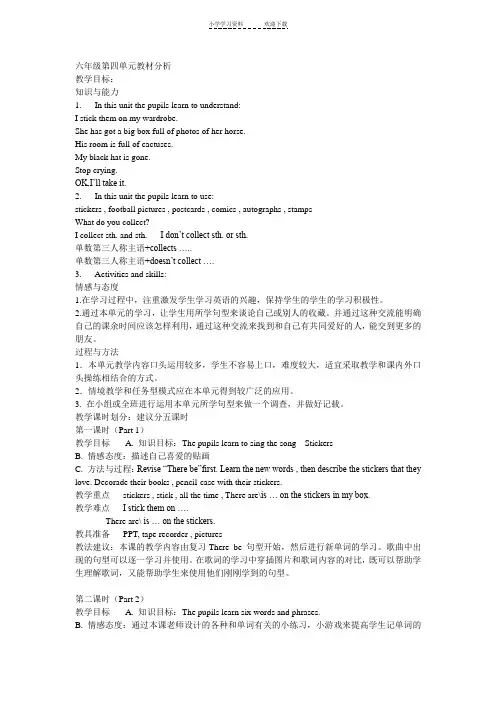
六年级第四单元教材分析教学目标:知识与能力1. In this unit the pupils learn to understand:I stick them on my wardrobe.She has got a big box full of photos of her horse.His room is full of cactuses.My black hat is gone.Stop crying.OK,I’ll take it.2. In this unit the pupils learn to use:stickers , football pictures , postcards , comics , autographs , stampsWhat do you collect?I collect sth. and sth. I don’t collect sth. or sth.单数第三人称主语+collects …..单数第三人称主语+doesn’t collect ….3. Activities and skills:情感与态度1.在学习过程中,注重激发学生学习英语的兴趣,保持学生的学生的学习积极性。
2.通过本单元的学习,让学生用所学句型来谈论自己或别人的收藏。
并通过这种交流能明确自己的课余时间应该怎样利用,通过这种交流来找到和自己有共同爱好的人,能交到更多的朋友。
过程与方法1.本单元教学内容口头运用较多,学生不容易上口,难度较大,适宜采取教学和课内外口头操练相结合的方式。
2.情境教学和任务型模式应在本单元得到较广泛的应用。
3. 在小组或全班进行运用本单元所学句型来做一个调查,并做好记载。
教学课时划分:建议分五课时第一课时(Part 1)教学目标 A. 知识目标:The pupils learn to sing the song---StickersB. 情感态度:描述自己喜爱的贴画C. 方法与过程:Revise “There be”first. Learn the new words , then describe the stickers that they love. Decorade their books , pencil-case with their stickers.教学重点 stickers , stick , all the time , There are\is … on the stickers in my box.教学难点I stick them on ….There are\ is … on the stickers.教具准备PPT, tape recorder , pictures教法建议:本课的教学内容由复习There be 句型开始,然后进行新单词的学习。
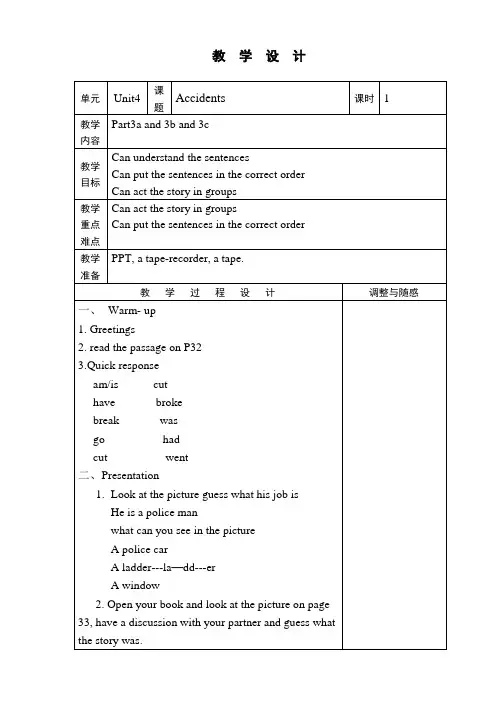
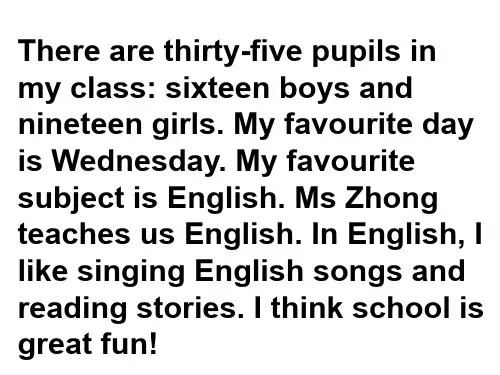
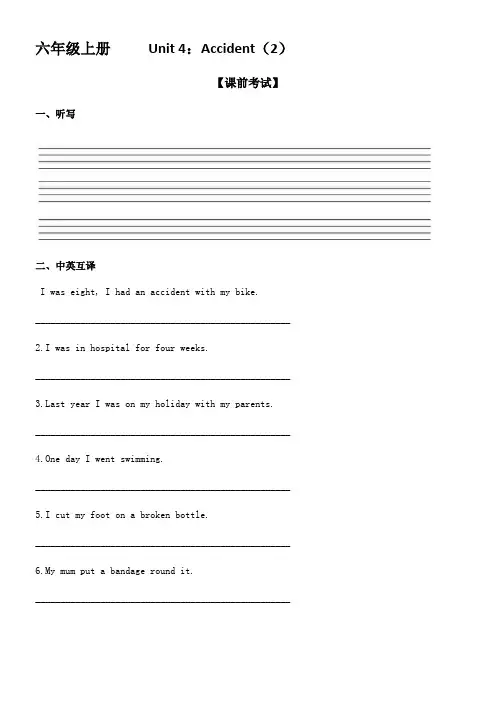
六年级上册Unit 4:Accident(2)【课前考试】一、听写二、中英互译I was eight, I had an accident with my bike.___________________________________________________ 2.I was in hospital for four weeks.___________________________________________________ st year I was on my holiday with my parents.___________________________________________________ 4.One day I went swimming.___________________________________________________ 5.I cut my foot on a broken bottle.___________________________________________________ 6.My mum put a bandage round it.___________________________________________________三、回答以下句子Jack have an accident when he was eight ?确信回答:_________________________________否定回答:_________________________________Juliet cut her foot/hand last year?确信回答:_________________________________否定回答:_________________________________【课堂讲解】*重点短语keep to rules _________ ride one’s(my/your/his/her) bike _________wear one’s helmet _________ take care _________put on one’s belt _________ ride in a car _________look left and right in the street _________stay here _________ for a while _________ a deep cut _________ speak English _________ play games _________*重点句子1.-What’s the matter with you?/ What’s wrong with you? 你怎么了?-My knee hurts./ I hurt my knee. ear / finger / leg / foot /……2.-Are you OK/right?(问人)-I am fine. / No, I am not well.it bad?(问伤口)-Yeah,I feel pain.4.小病小痛怎么说,下表告知你!*我会填(不仅注意第三人称单数,还要注意时态哟!)1. Yesterday I _____________________(发烧了).2. My father ________________________(肚子疼).3. Last week she ____________________ (头疼).4. They ____________________________(有点咳嗽).5. My mother and I _____________________(伤风了).【课后作业】一、改错,将你以为错误地址的字母填入括号内,并在横线上更正() watch an big football game on TV. ____________ A B C()’re play with dolls. ____________ A B C() like rideing my bicycle. ____________ A B C()’ve get a stamp from the USA. ____________ A B C()’s on the east of China. ____________A B C二、按要求写句子you got any picture books?(作否定回答)stamps is from China.(改成复数句)is a letter for me.(改成一样疑问句)want to go inside.(改成一样疑问句)have a special meal on Thanksgiving Day.(对画线部份提问)三、阅读明白得Christmas Day comes in winter. It is always on the same day each year. It’s on December 25th. We always get up early on Christmas Day.When we get up,we find presents at the end of our beds. We open our presents in the noon,we have a big lunch at home. In the afternoon,we play games and have a good time. In the evening,we are usually very tired,so we go to bed at about10 o’clock.( ) 一、Christmas Day is on 25th.A、NovemberB、DecemberC、October( ) 二、We always get up on Christmas Day.A、earlyB、lateC、at ten o’clock. ( ) 3、We find at the end of our bed.A、foodB、presentsC、socks( ) 4、In the ,we play games and have a good time.A、eveningB、morningC、afternoon ( ) 五、Because we are very ,we go to bed early.A、tiredB、happyC、sad。
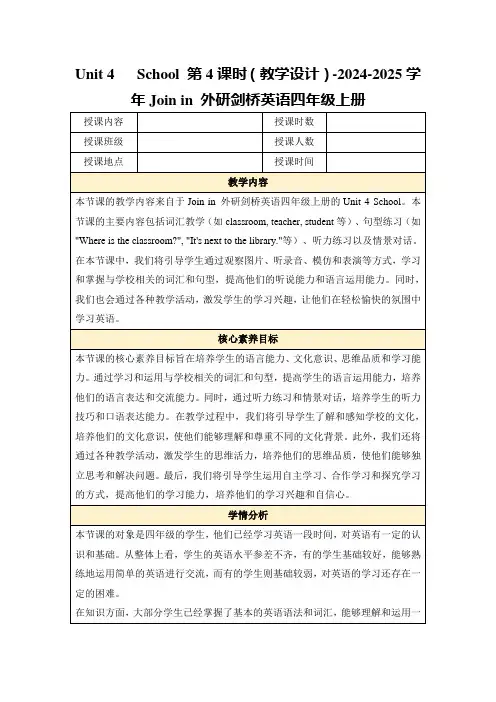
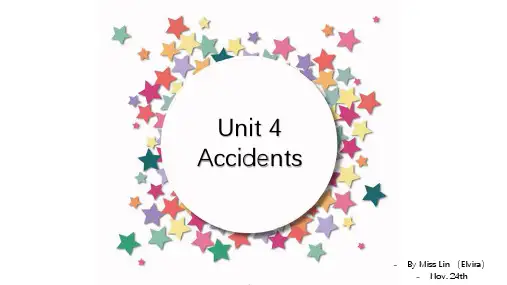

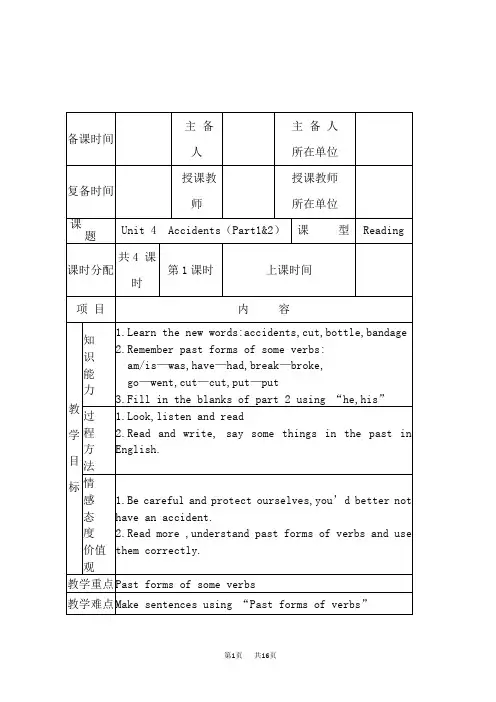
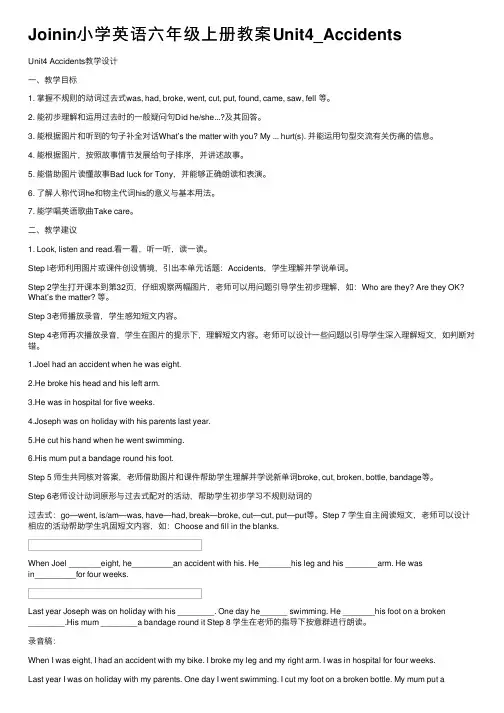
Joinin⼩学英语六年级上册教案Unit4_AccidentsUnit4 Accidents教学设计⼀、教学⽬标1. 掌握不规则的动词过去式was, had, broke, went, cut, put, found, came, saw, fell 等。
2. 能初步理解和运⽤过去时的⼀般疑问句Did he/she...?及其回答。
3. 能根据图⽚和听到的句⼦补全对话What’s the matter with you? My ... hurt(s). 并能运⽤句型交流有关伤痛的信息。
4. 能根据图⽚,按照故事情节发展给句⼦排序,并讲述故事。
5. 能借助图⽚读懂故事Bad luck for Tony,并能够正确朗读和表演。
6. 了解⼈称代词he和物主代词his的意义与基本⽤法。
7. 能学唱英语歌曲Take care。
⼆、教学建议1. Look, listen and read.看⼀看,听⼀听,读⼀读。
Step l⽼师利⽤图⽚或课件创设情境,引出本单元话题:Accidents,学⽣理解并学说单词。
Step 2学⽣打开课本到第32页,仔细观察两幅图⽚,⽼师可以⽤问题引导学⽣初步理解,如:Who are they? Are they OK? What’s the matter? 等。
Step 3⽼师播放录⾳,学⽣感知短⽂内容。
Step 4⽼师再次播放录⾳,学⽣在图⽚的提⽰下,理解短⽂内容。
⽼师可以设计⼀些问题以引导学⽣深⼊理解短⽂,如判断对错。
1.Joel had an accident when he was eight.2.He broke his head and his left arm.3.He was in hospital for five weeks.4.Joseph was on holiday with his parents last year.5.He cut his hand when he went swimming.6.His mum put a bandage round his foot.Step 5 师⽣共同核对答案,⽼师借助图⽚和课件帮助学⽣理解并学说新单词broke, cut, broken, bottle, bandage等。
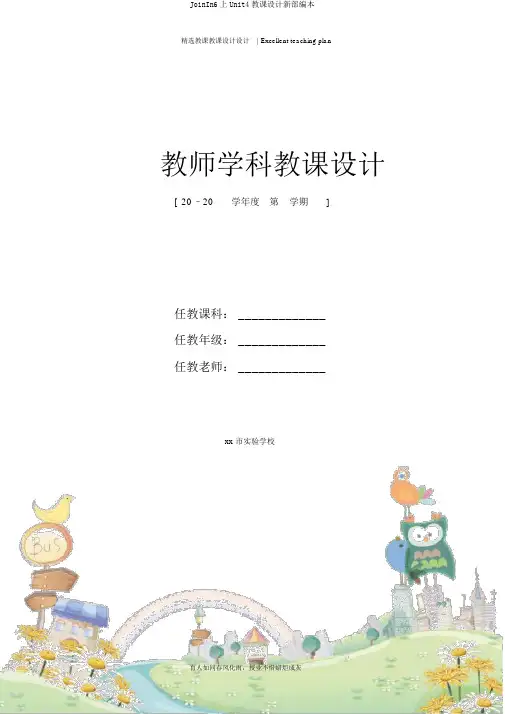
精选教课教课设计设计| Excellent teaching plan教师学科教课设计[ 20–20学年度第__学期]任教课科: _____________任教年级: _____________任教老师: _____________xx市实验学校精选教课教课设计设计| Excellent teaching planUnit 4 Accidents单元备Teaching objectives:1.掌握不规侧的动词过去式was, had, broke, went, cut, put, found, came, saw, fell 等。
2.能初步理解和运用过去时的一般疑问句Did he / she?及其回答。
3.能依据图片和听到的句子补全对话 What ’s the matter with you? Myhurt(s).并能运用句型沟通相关伤痛的信息。
4.能依据图片,依据故事情节发展给句子排序,并叙述故事。
5. 能借助图片读懂故事Bad luck for Tony,并可以正确朗诵和表演。
6.认识人称代词 he 和物主代词 his 的意义与基本用法。
7.能学唱英语歌曲 Take care.精选教课教课设计设计| Excellent teaching planUnit 4 Accidents (1)Teaching content:part sixTeaching objectives:1.复习身体部位的单词 .2.能四会掌握单词: knee, ear, finger, arm, hand, head, leg, shoulder3.能四会掌握句子: What ’sthe matter?My hurts.Teaching difficult points:能四会掌握句子: What ’swrong with you? What’sthe matter?Teaching aids: Flashcards; cassette;Teaching procedures:I. Warm-up1.Review the words.Point to the different parts of the body, and ask Ss to answer the name.Such as knee, ear, finger, arm, hand, head, leg, shoulder.2.Sing a song, head shoulder knees and toesII. Presentations:1.Make a scene with pictures or body language.指引学生理解并学习对话:What ’sthe matter with you? Myhurt(s).并在情境中演练对话。
